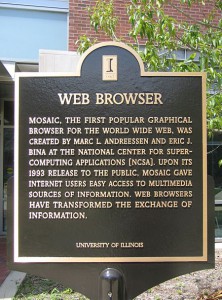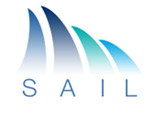Let´s be honest with each others; you as well as me are immigrants in the digital society.
We are not born into it although we have adapted pretty well to the standards, manners and customs that have emerged since April 22nd, 1993.
A fair amount of you who reads these lines can even address yourself as settlers in this digital society. You were the ones that actually laid the grounds and paved the way for what was going to come by developing and contributing to the protocols that today founds the basis of what most of takes for granted, reluctantly for some and willingly for others – the net! I certainly was not one of you, although I am now involved in a project aimed to define the network of our grandchildren – who am I to do that?! ![]()
I was 20 years 1993. It was also the year when I started to become friend with computers and “IT” (as in the buzzwords of those years) in general. I realized that a computer connected to a network could actually be considered a friend that helps me gain time – not only an enemy pocking on my attention and stealing my time. Some years later and still a novice on the subject, I started to read the bible of that time, “Data and Computer Communications” at a stretch and suddenly it all came together. I have never longed much for the technical details but the overall picture of internetworking now started form the basis for future whereabouts and this book became my reference ever since.
Looking in the rear mirror and generalizing a bit, all decades have their distinguishing mark. In terms of networking, the 1960s characteristic would be the ARPANET as the worlds first functioning packet switched network, followed by the -70s with important communications protocols like X.25, DECnet and Ethernet. Then came the -80s where the foundation of today’s Internet was laid by describing protocols in terms of the OSI-model and the special adaptation of it into TCP/IP. During the -90s we created todays de-facto references like “Browsers” and “www” and during the -00s the focus shifted towards the actual behaviors and usage of the network by the rise of all kinds of “Communities”.
So, what is the distinguishing mark of the 2010s? “Anything as a Service”?
And what will represent the digital society of tomorrow, the society that our grandchildren will be born into and take for granted?
Together, in SAIL, our aim should be to open our minds and views and put ourselves into the context of people that will be born in the 2020s and onwards. What kind of digital society will they take for granted, whereas their parents will feel like they are the immigrants?
 Curious about 22 April 1993? Simple! It was the day of release for the 1.0 version of Mosaic web browser. A mile-stone that can well mark the start of the digital society that we are now living in, and that is just about to get its first natives reaching lawful age!
Curious about 22 April 1993? Simple! It was the day of release for the 1.0 version of Mosaic web browser. A mile-stone that can well mark the start of the digital society that we are now living in, and that is just about to get its first natives reaching lawful age!
Photo from Wikipedia, by Ragib Hasan. Licensed under CC BY-SA 2.5.
Disclosure and disclaimer: I am engaged in the SAIL project, on behalf of Ericsson. However the opinions expressed in this post are my personal, and not those of the SAIL project or my employer.







